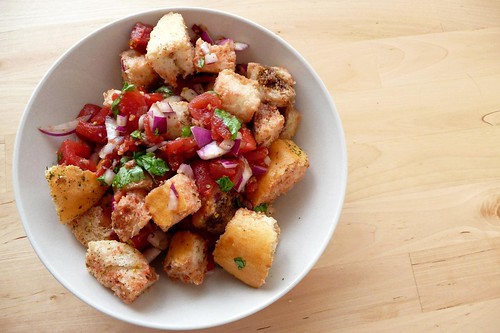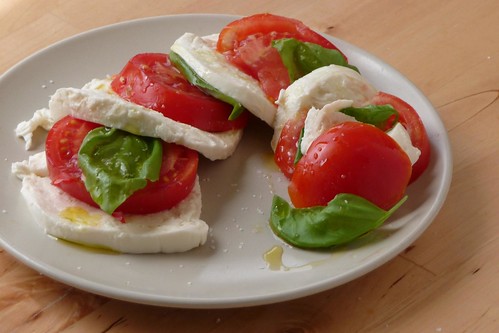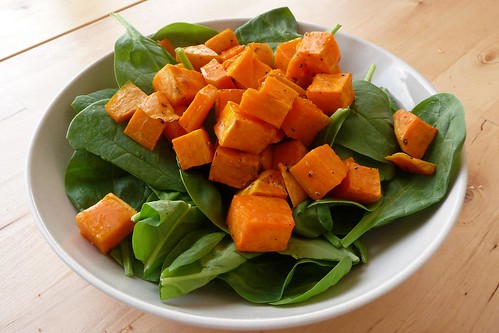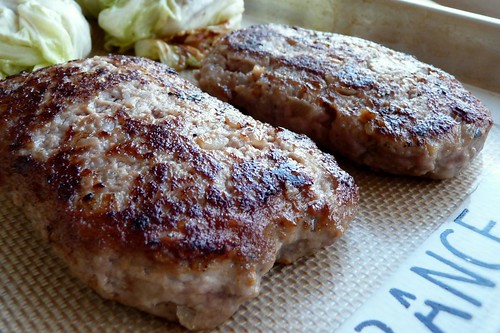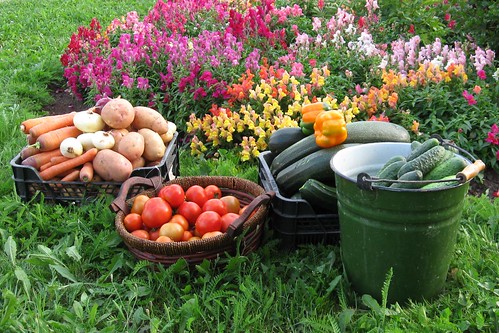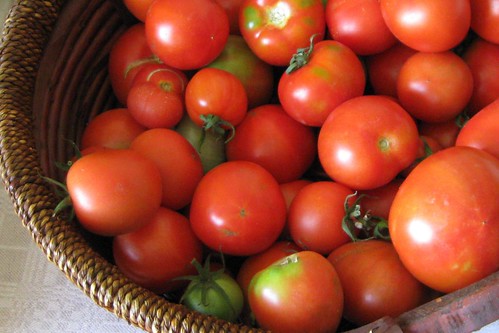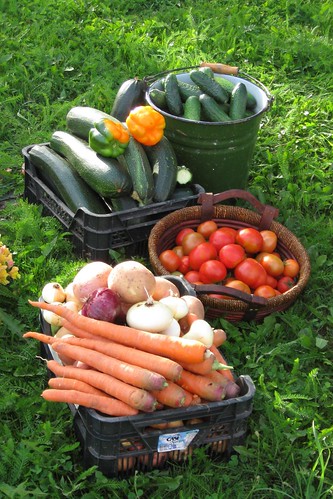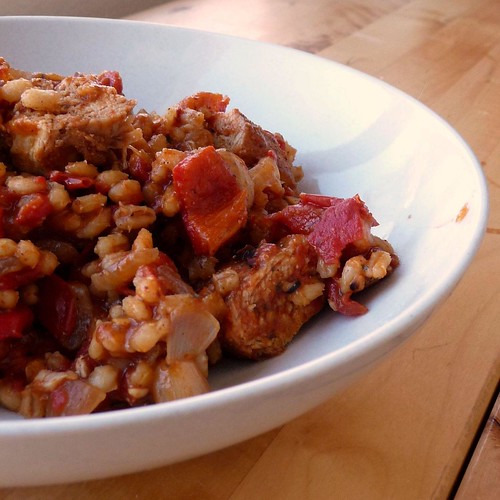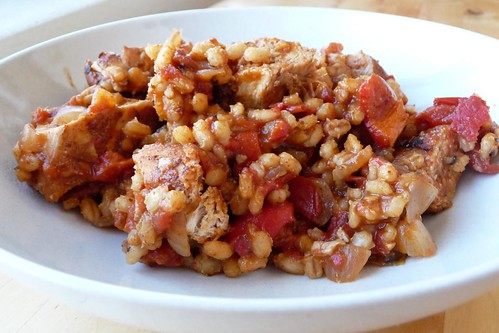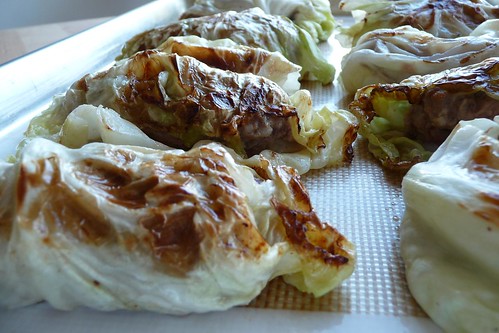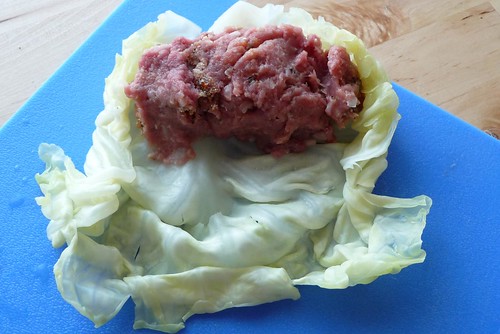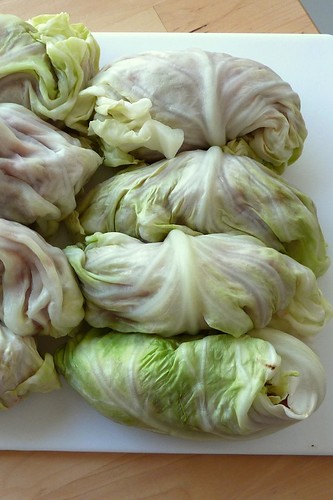
Talk about a challenge. I honestly wasn't expecting things to go the way they did. From failed mayonnaise to substituting half the main ingredients, at this point I couldn't tell you if I completed the challenge or not.
So what am I on about? It's the 14th of the month, which means it's time for a Daring Cooks challenge! This is my first one and also the first Spanish dish I've tried to make.
Olga of http://lascosasdeolga.blogspot.com and http://olgasrecipes.blogspot.com hosted this month's challenge. She chose a set of recipes for a cuttlefish and artichoke paella by José Andrés, whom she notes is one of the top Spanish chefs currently.
When it came time to source and buy all of the ingredients, I hit roadblock after roadblock. First, no cuttlefish in sight, which honestly didn't surprise me. But no squid? No frozen calamari rings? Nada. I wound up with a seafood medley made up of cuttlefish, squid rings, baby squid (cute!), octopus, clams, mussels and shrimp. It worked out and I have quite a bit of the bag left for later.
Next, no Spanish short-grain rice. I really thought my favorite market would have it, but alas, it was not meant to be. I wound up with a pound or so of Japanese shortgrain sushi rice, which I'd read earlier was what another Daring Cook used.
Finally, no fish stock. No fish heads either! I threw up my hands at this point and threw in some chicken-and-tomato bouillon by Maggi that I particularly enjoy. What's one more substitution between friends, right?
Oy vey, I get really tired of living where I do -- there is nothing available unless you're willing to drive fifty or sixty miles and try four or five stores.
Okay! Now that we kinda have our ducks in a row, let's get down to business. The recipes below have been adapted... heavily.

Making the paella is really pretty straightforward. The thing to remember is that Spanish rice dishes don't take a lot of stirring like Italian risottos, so once everything is cooking along nicely, leave it alone!
Adapted from a recipe on Made in Spain by José Andrés
- 1 can 6 - 8 artichoke hearts, cut into eighths
- 6 crimini mushrooms, quartered
- 1 bay leaf
- 70 ml white wine
- 150 g frozen invertebrate medley, defrosted
- 1/2 recipe sofregit (recipe follows)
- 150 g (1 cup) sushi rice
- 3 cups chicken and tomato stock
- 1 healthy pinch of saffron
- 1 recipe allioli (olive oil and garlic sauce, optional)
Cut any large medley pieces into smaller chunks. Cut artichoke hearts into eighths and quarter mushrooms.
In a large paella or saute pan over moderate heat, add a tablespoon of oil and swirl to heat. Add invertebrates, bay leaf, artichoke hearts and mushrooms. Saute until the artichoke hearts turn golden. Deglaze with white wine and add sofregit. Stir thoroughly. Add stock and bring to a boil on high heat. Add rice and return to a boil for 5 minutes1.
Add saffron and stir in well. Reduce heat to low and simmer for an additional 8 minutes. The rice should be a touch softer than al dente. Remove from heat and let stand before serving for 5 minutes. Serve with allioli.
Notes:
- Spanish short grain rice is not stirred often as with Italian risottos. Olga recommends not stirring more than twice for any Spanish rice dish, this one included.
. . .
My sofregit came out very onion heavy; I would have preferred more tomato and less onion, I think. It smelled divine, however.
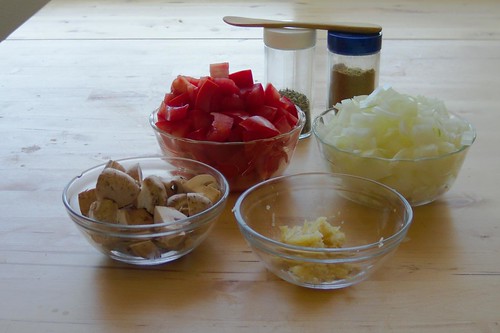
Sofregit is a fragrant Spanish red sauce composed of olive oil, tomatoes, garlic and onions which sometimes contains peppers and mushrooms.
- 1 tbsp olive oil
- 3 - 4 ripe Roma tomatoes, chopped
- 1/2 small onion, chopped
- 5 garlic cloves, crushed
- 6 crimini mushrooms, chopped
- 1 bay leaf
- salt
- 1/2 tsp cumin
- 1/2 tsp oregano
Combine all of the ingredients in a medium saute pan over moderate-low heat. Saute until all veggies are nice and soft. Taste, adjust seasonings as desired.
Notes:
- This sauce keeps well and can easily be made ahead and frozen for use later on different dishes.
- I absolutely abhor green bell peppers and I usually don't care for any kind of pepper in my tomato-based sauces. If you do, throw in half a bell pepper with everything else.
. . . .
Oh, how I wish I could tell you about the wonderful, thick allioli I wound up with. How I would regale you with tales of my wrist nearly falling off as I made this the old-fashioned traditional way with a mortar and pestle.
In actuality, it failed. Miserably. In fact, despite everything I tried (egg yolk, more juice, more oil, more garlic, a food processor!) it never actually got to the point of the thick mayonnaise it should have. I've made this before (in a mortar with garlic and salt, the traditional way) and I remember it being a terribly long process but this is perhaps the second time mayo has locked up on me. It wasn't a problem with the recipe, rather it seemed to be just a problem with us. For whatever reason, mayo completely defeated me.
After both my husband and I spending most of the paella's cooking time on it, I gave it up. The light was going, our tummies were rumbling, dinner was late as it was, it just wasn't going to happen.
So, with a nice glass of chardonnay to accompany it for him and a cold glass of kefir for myself, we sat down to dinner. (And wound up with dinner theatre as cops went off-roading in the vacant lot across from our flat, but that's another tale.)
In the end, I'm glad I made this. It was really pretty good and I plan to make more paellas in the future.
